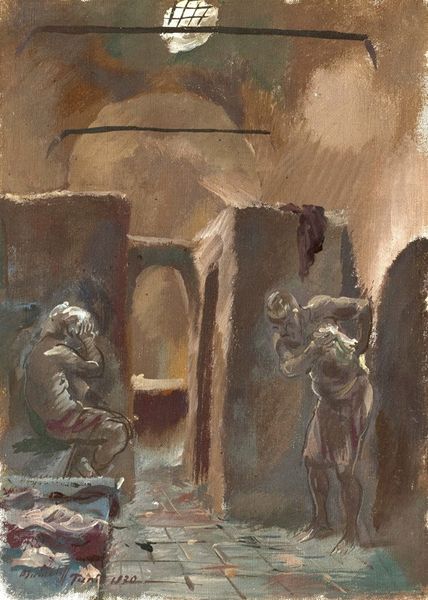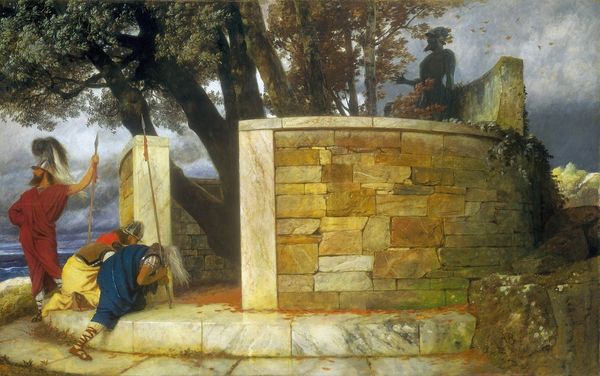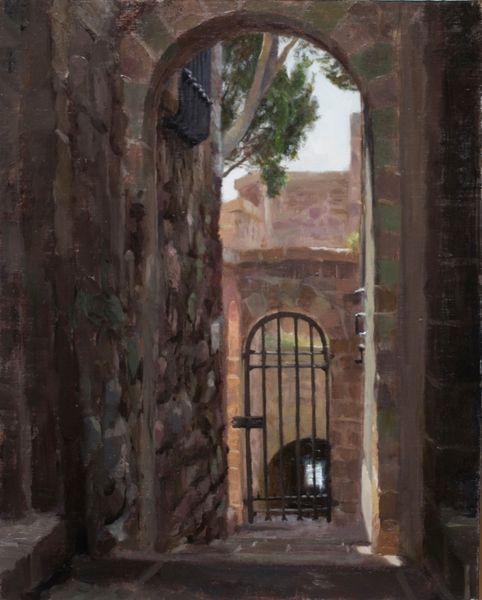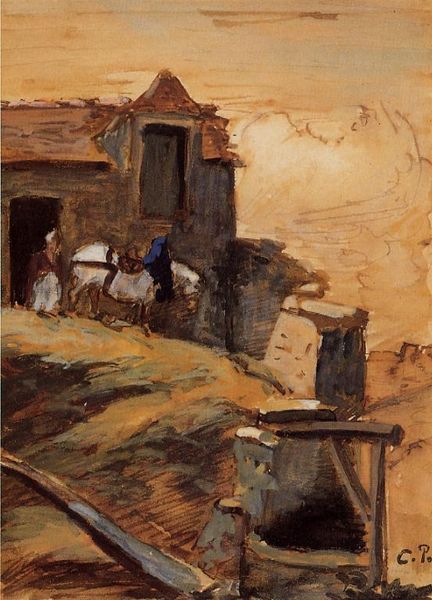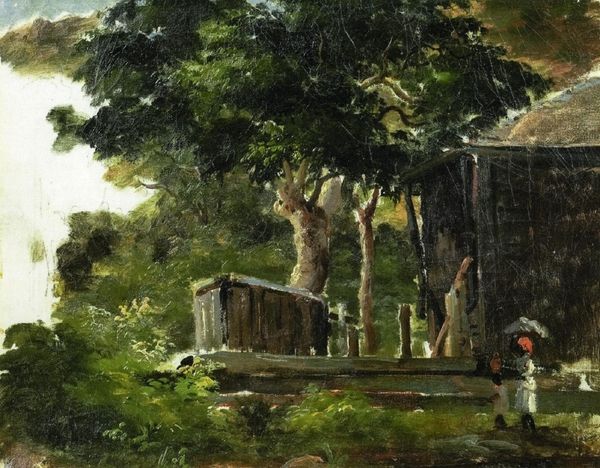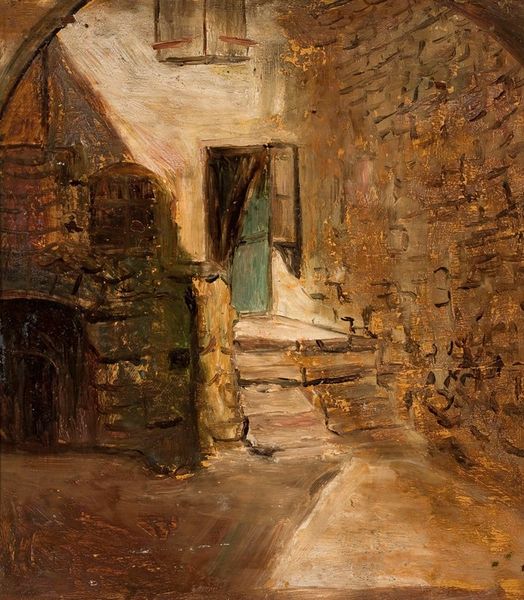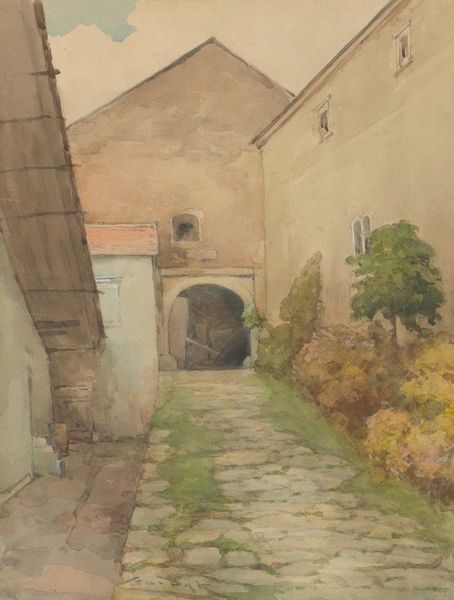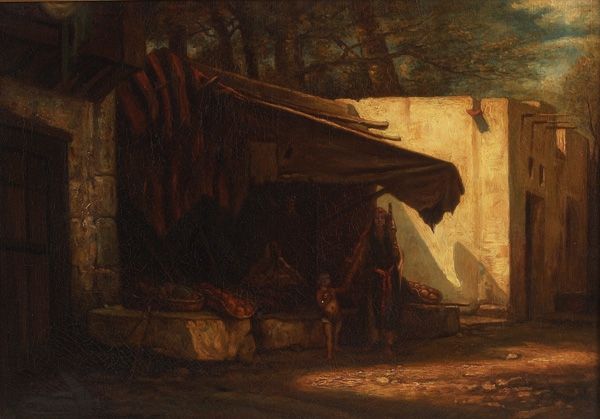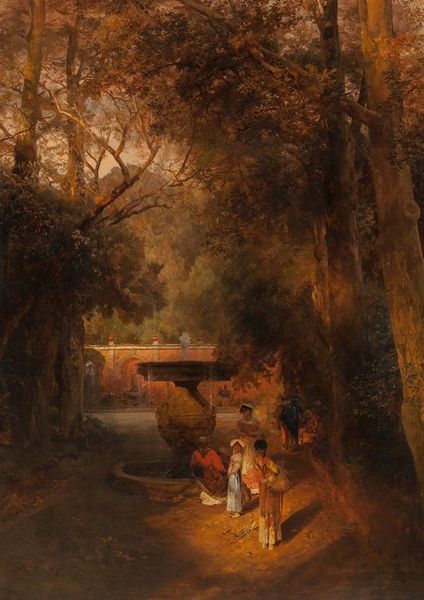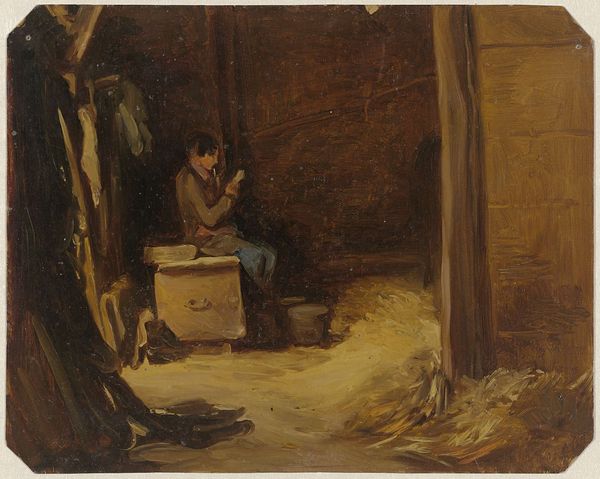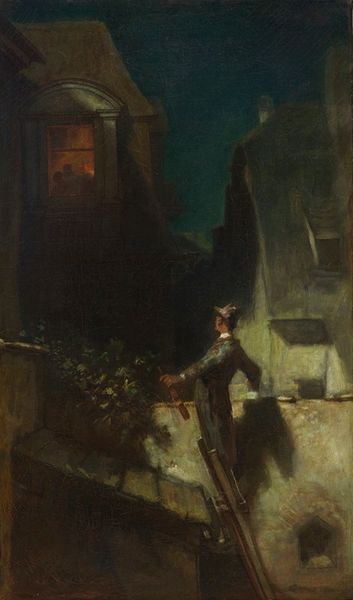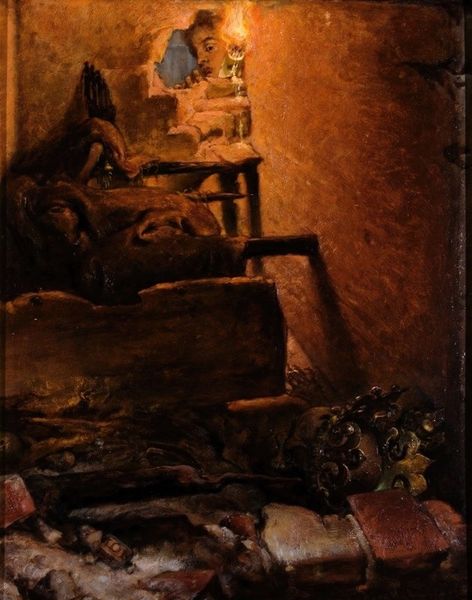
Copyright: Public Domain: Artvee
Curator: This watercolor and oil painting by Isidore Pils is entitled "Soldat, 30 juin 1871," dating from 1871. Editor: A rather muted palette. The artist achieves a somewhat unsettling mood utilizing somber tones—the weight of the stone structure, a transient makeshift camp, really bear down on the figure. Curator: Indeed. Pils painted it shortly after the Franco-Prussian War, likely during or just after the Paris Commune. The date in the title fixes its production, revealing a society mired in conflict and transformation. The image speaks to broader issues facing post-war French society, echoing similar representations of defeated soldiers. Editor: It's striking how Pils juxtaposes the monumentality of the wall with the soldier's vulnerability. The composition really works well: The stone structure, the dark canopy overhead and then all that open space below the soldier feels psychologically apt. Curator: Absolutely, one sees here the power of national institutions against individual experience, the lingering presence of militarism, but it goes further: the soldier is relegated to the margins of the scene, embodying perhaps the loss and disenfranchisement felt by many. Editor: Despite the melancholy subject matter, one has to admire how effectively Pils deploys plein-air techniques here. I also enjoy the play of light. See how the background area opens up? Very simple, very effective contrast of tonal planes here. Curator: Yes, that integration of everyday realities through genre painting reflects how Pils was grappling with both personal memory and collective trauma of that time, as French identity was redefined through conflict. Pils also gives us an intimate glimpse into the artist's experiences of daily life and emotional impact on the collective imagination. Editor: The subtle blurring and blending contribute significantly to the painting's introspective nature, enhancing its contemplative essence. Curator: A somber note of historical observation that provides a bridge into understanding more about the trauma of war, from national narrative down to the lone soldier. Editor: It gives us something to think about aesthetically as well—I may very well leave today appreciating the technical mastery that underlies the emotion here.
Comments
No comments
Be the first to comment and join the conversation on the ultimate creative platform.
